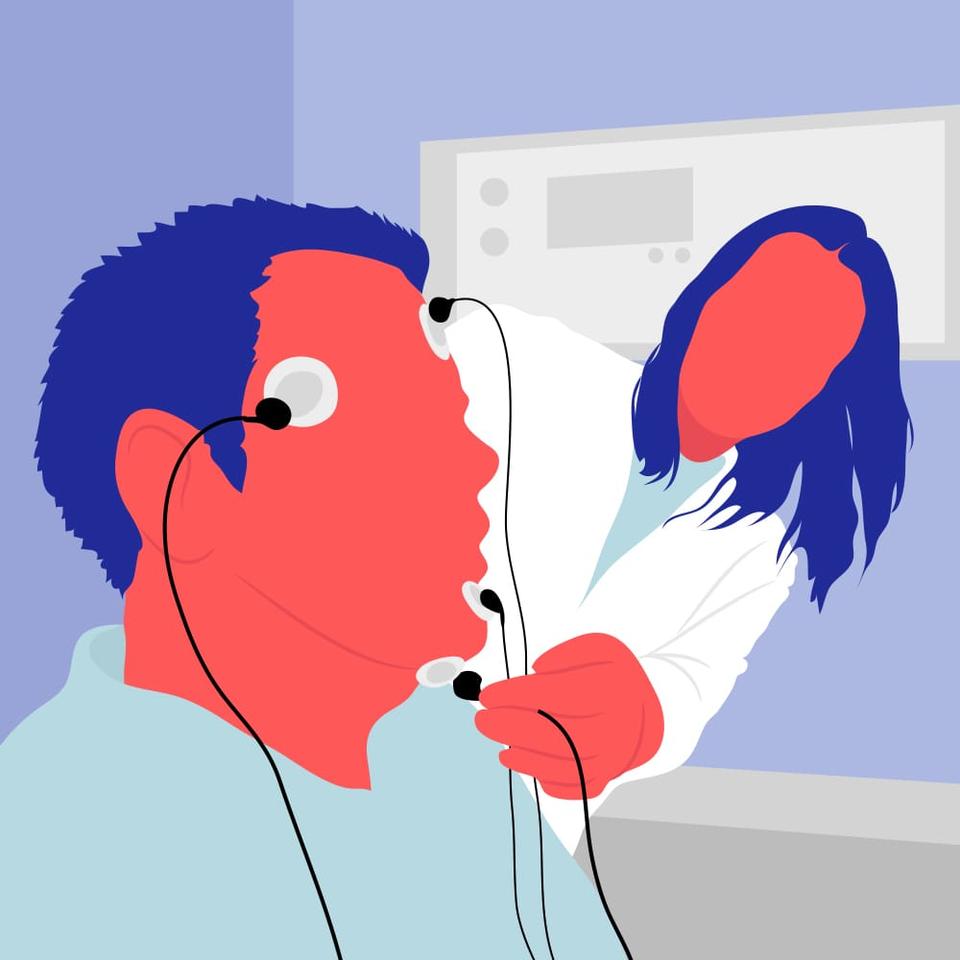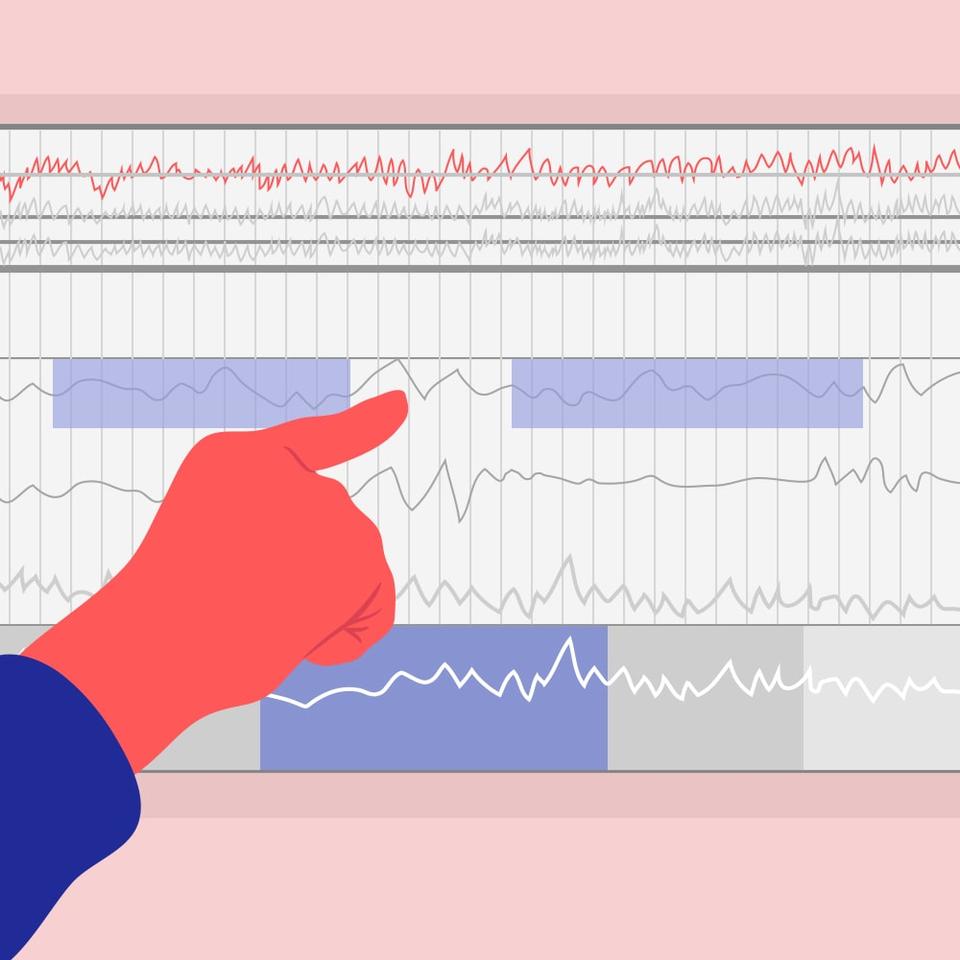Considering a Sleep Study? Here’s What to Expect
If you’re considering a sleep study, we’re guessing these things are true for you:
-
You’re the worst sleeper you know
-
You’ve had trouble sleeping for years, and nothing seems to help
Fortunately, a polysomnogram — a sleep study where you’re monitored overnight — can be extremely helpful in reversing both of those statements.
A sleep study can help diagnose common disorders like sleep apnea, periodic limb movement, narcolepsy, restless legs syndrome, insomnia and other disruptive behaviors like sleepwalking.
And once you know what’s stopping you from sleeping well, you can finally start to sleep better.
Unfortunately, as useful as sleep studies are, nervousness and apprehension about the process can sometimes stop people from booking one — even if they need it. Sound like you (or someone you know)? We’ve got you covered.
Here’s What Happens in a Sleep Study, from Start to Finish:
1. Confirm the Details
First, your doctor’s office will let you know where your sleep study is being conducted. (Usually it’s in a hospital or an accredited sleep center.)
You can bring your own pajamas and anything that will make you feel more comfortable, like a favorite blanket or your pillow and the book you’re currently reading.
You’ll be asked to arrive a few hours before bedtime — typically around 8 PM. For best results, refrain from alcohol or caffeine the day of your sleep study.
2. Check In
When you arrive for your sleep study, you’ll check in and sign consent forms, just like you do when you check in at your doctor’s office. You’ll then be shown to your bedroom for the night.
Your room will be set up to be comfortable and dark — and to look as much like a normal bedroom as possible. Typically, your room will also have your own bathroom and even a television. Dr. Sara Benjamin from John Hopkins University reports that most people sleep better than they expect to during a sleep study.
3. Get Set Up
Once you’re settled into your room, all you have to do is start your normal nighttime routine of getting ready for bed. You can read, watch television or listen to music —whatever helps you wind down and relax. It’s important that you stay awake until your normal bedtime.
About an hour before you go to sleep, a technician will place sensors and electrodes at specific points on your body. These are connected using a dab of special paste and medical tape. You may also be asked to wear a heart rate monitor and chest bands to monitor your breathing.
Once you begin to feel drowsy, the technician will help you into bed and do a final check of all your monitors to make sure they’re working properly.
4. Sleep (While You're Studied)
Most studies try to get at least seven hours of sleep data, although they can work with less. While you’re sleeping, the monitors attached to your body will be recording a constant stream of data.
The EEG (electroencephalogram) monitor will measure your REM sleep cycles. At the same time, other monitors will keep track of your oxygen levels and heart rate, as well as your movements and snoring.
Don’t worry: all the cords to the monitors are given plenty of slack, so you’ll be able to move comfortably in your bed. And if you need to use the bathroom during the night, simply notify the technician — they’ll assist you.
5. Pack up & Go Home
Your sleep study will last until about 6-8 AM the following morning.
The technician will wake you up at your normal wake time and remove all of your monitors. After that, you’ll get dressed for the day and pack up your belongings.
6. Get Your Results
Once your sleep study is complete, it usually takes up to two weeks to compile all of your data. Your doctor will then review your results with you and communicate any findings.
The data from your sleep study will be compiled into various reports. Those reports may include:
-
Sleep Efficiency: this quantifies the amount of time you spent sleeping during the night vs. time you spent awake.
-
Apnea Hypopnea Index (AHI): this quantifies how often you experienced apnea and hypopnea during the night. A number higher than five in adults usually points to a sleep apnea diagnosis.
-
Oxygen Desaturation Index (ODI): this quantifies the number of times your oxygen levels dropped during the night.
-
Heart Rate: A raised or lowered heart rate during sleep can point to different diagnoses.
All of this information put together can help your doctor better understand how your body is responding to sleep.
After your sleep study, your doctor may be able to discuss a diagnosis and treatment plan right away. Or, in some cases, they may order additional testing in order to collect more data.
Ready for Your Sleep Study?
Sleep studies aren’t necessary for everyone. But hopefully this article has convinced you that if you do need one, there’s nothing to fear — they’re extremely straightforward, noninvasive and painless.
If you’ve been struggling with sleep for a long time, they can be an incredibly useful tool in helping you understand (and correct) your sleep patterns. In short: the results are worth the inconvenience.
They may answer more questions you have about poor sleep quality.
Sources:
(1) “How Does a Sleep Study Work?" Sleep Foundation, www.sleepfoundation.org/excessive-sleepiness/diagnosis/how-does-sleep-study-work. Accessed 2 Dec. 2019.
(2) “What Happens in a Sleep Study?" John Hopkins Medicine, www.hopkinsmedicine.org/health/wellness-and-prevention/what-happens-in-a-sleep-study. Accessed 2 Dec. 2019.
(3) Peters, Brandon MD. “What Is An Overnight Sleep Study (Polysomnogram)?” Men's Journal, 9 Nov. 2019, www.verywellhealth.com/what-to-expect-in-a-sleep-study-3015121
Do you know what happens in a sleep study?
See what you can learn from it.
#sleep #sleepstudy #mantasleep
Disclaimer: The information contained in this website or provided through our blog, e-mails, or programs is for informational purposes only. It is not intended to be a substitute for medical advice, diagnosis or treatment that can be provided by your healthcare professionals.















































